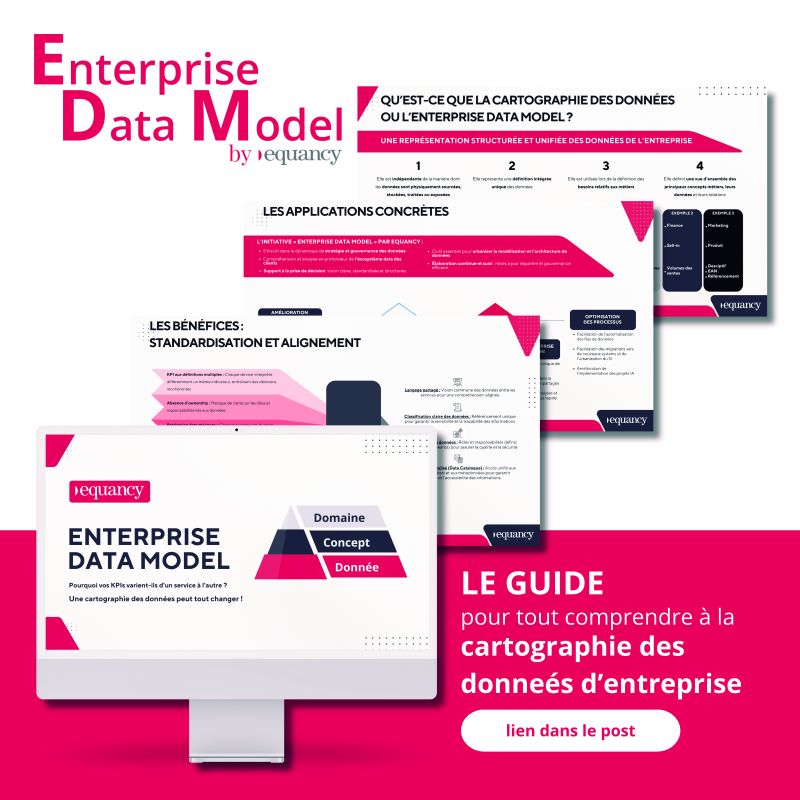Digital & Data transformation of the insurance sector : 4 trends to make a difference in 2022
In 2021, insurtech broke records: fundraising was higher than in the previous three years and their market share is growing strongly. For example, Luko's home insurance represents 25% of online insurance market share, while health insurer Alan raised 185 million euros in 2021. Data and digital are at the heart of the success of these players in the new economy. Indeed, they can thus meet the high expectations of simplicity, responsiveness and flexibility of consumers. To face this new competition and the acceleration of the digitalization of uses, traditional insurers have no choice but to transform themselves and/or to get closer to innovative startups. An imperative that is all the clearer since the GAFAMs are also looking into health issues.
To continue to remain competitive and find new growth levers, 4 fundamental trends have been identified for 2022: accelerate on data and technology to improve the customer experience and operational efficiency, target high-potential customer segments , develop initiatives related to risk prevention and take a strong position in the fight against global warming.
TREND 1: ACCELERATE ON TECHNOLOGY AND DATA TO IMPROVE THE CUSTOMER EXPERIENCE
Data and technology are undeniable levers for improving the customer experience, optimizing processes or even aiming for operational excellence... This may involve using artificial intelligence and IOT to transform claims reporting or again the blockchain to fight against fraud and speed up processes. One thing is certain, technology will be at the center of insurance journeys in the coming years.
$140 billion in revenue is expected to switch from traditional insurance to digital products by 2025.
Improve the customer experience:
The customer experience is one of the first sticking points for traditional insurance, which is often little or not digitized. However, consumers today expect to be able to take out and manage their contracts easily.
This is why Canadian Premier Life Insurance has partnered with Toronto startup PolicyMe to offer 100% online life insurance subscription. The promise ? No paperwork, no phone calls or appointments with an agent. Application is accepted in less than 20 minutes, compared to 4-6 weeks with normal underwriting processes. Similarly, Generali has partnered with fintech Zalpha to launch "Zalpha Gen", a life insurance product with over 2,000 investment vehicles. This exclusive offer is based on PROPILOT technology, a form of artificial intelligence developed by Zalpha since 2014, which simplifies the decision-making process for users as much as possible.
Automate processes:
Beyond the customer experience, it is also the employee experience that can be optimized thanks to AI. Technology can, in fact, automate certain very time-consuming processes and assist employees to improve their performance. In Asia, Sun Life has equipped its advisors with Google Workspace, for example.
Startups have also specialized in the development of AI solutions for insurers. This is the case of Shift Technology, a young French company that raised $220 million in 2021. Its mission? Helping insurers automate claims reporting and resolution processes in P&C and health insurance. Unlike its peers who compete directly with historical players, the French unicorn has chosen to work in collaboration with Axa, CNA, Spirica, Harmonie Mutuelle or even Covea.
Data to disrupt traditional insurance pricing models:
Boosted by data, the services of players in the new economy are ultra-personalised. Insurance players are inspired by this to attack another common sticking point in the sector: insurance contracts that are too fixed, poorly adapted to the real needs of the customer.
Thus, the prices of the Datafolio platform are based on the actual risk exposure and its prevention, protection and assistance services are tailor-made. Assurtech Leocare offers prevention services based on observing the needs of policyholders. This is notably operated by a bot called TakeCare based on AI as well as on open data provided by the Interministerial Observatory for Road Safety. TakeCare can then alert motorists when they enter risk areas to prevent damage.
TREND 2: TARGETING PROFESSIONALS AND SELF-EMPLOYED SEGMENTS WITH HIGH POTENTIAL
In 2020, the context of the health crisis had already highlighted the fragility of small structures. Since then, companies have revitalized themselves and have a more advanced relationship to risk. This is why the target of professionals and the self-employed - already coveted by banks - is becoming a real growth driver for insurers. Moreover, this profound cultural change is pushing insurers to position themselves not as mere "guarantors" but as partners in risk management. Among the many opportunities this represents, two issues should be at the heart of the reflections in 2022: cybersecurity for small businesses and the foresight of the self-employed.
In 2021, one in six companies said they had risked bankruptcy following a cyber attack, proof of the catastrophic consequences of these attacks.
Cybersecurity:
Theft of confidential data, ransomware, paralysis of systems… The number of cyber-attacks targeting companies is growing exponentially. Even if VSEs seem to be aware of the existence of cyber risks, paradoxically, few of them equip themselves to protect themselves. Less than 3 VSEs/SMEs per thousand are thus insured against cyber risk, compared to 87% for large companies.
Insurers therefore have a sizeable niche to better support their customers. This concerns the sale of cyber insurance but also value-added services: digital platform, advice, education, communication, and above all prevention... At the same time, this involves training the network to sell these products and raising the awareness of professionals. on this subject.
Thus, Société Générale has distinguished itself on the subject with Oppens. This "corporate cybersecurity coach" advises and supports VSEs and SMEs through a digital platform based on self-diagnosis, personalized recommendations and expert support.
The pension plan for the self-employed:
Self-employed workers (TNS) have little knowledge of their actual level of coverage: less than one out of two self-employed people take out a pension contract and barely a quarter know the specifics of their mandatory pension scheme.
The 3 million self-employed people in the territory therefore represent a growth opportunity for insurers. However, foresight is a technical subject, it is necessary to master the subtleties of the compulsory schemes, which differ according to the professions, in order to offer the most appropriate levels of guarantees. New entrants to the market are surfing on this complexity. These offer strategies diametrically opposed to those of historical players by simplifying and digitizing the sales process, while maintaining the rigor of underwriting.
Indeed, selling pensions was historically an expert job. But the broker Digital Insure proves that its democratization requires the construction of digital paths. Its simplified TNS Madelin offer offers a 100% digital journey. All you have to do is enter a few pieces of information such as the insured's SIRET number to automatically access the guarantees of their compulsory scheme and size the appropriate coverage.
Easyblue has also tackled professional insurance customers. Created in 2019, it offers insurance based on smoother and faster digital processes. To achieve this, Easyblue uses artificial intelligence technologies and offers a virtual insurance coach to better understand the needs of business leaders. Other uses of artificial intelligence: performing risk audits. The latter make it possible in particular to define a tailor-made insurance program for each client. These audits are also used to detect fraud or develop predictive solutions.
Less than one out of two self-employed people take out a provident scheme and barely a quarter know the specifics of their mandatory provident scheme.
TREND 3: DATA AND IoT AT THE SERVICE OF RISK PREVENTION
If insurers have all their legitimacy in the management of claims, many of them today position themselves on the accidents of life and innovate in terms of prevention to better avoid them. At the heart of this new ambition: data and the Internet of Things (IoT).
Among the "accidents of life", psycho-social risks have a growing share, especially since the health crisis. In 2021, 51% of companies would have been faced with a work stoppage in the context of psychosocial risks, an increase of 15% compared to the year 2020.
The aging of the population is also to be taken into account. Between 2017 and 2030, the population of over 65s will grow by 3.7 million people. Today, however, is the time to "age well": 96% of those over 50 are in favor of preventive medicine, and 82% of 18-24 year olds recognize that prevention improves daily life, increases life expectancy and reduces the risk of developing chronic diseases.
Health ranks second among the most worrying subjects for consumers to prepare France for 2025
Connected objects to monitor everyday health problems:
Until now, insurance models were built on empirical data, classified by category, giving an overall view of risk. Connected objects, which are gradually becoming part of consumers' daily lives, are opening up new perspectives for insurers. They provide access to new types of information, particularly in terms of health: weight, blood pressure, blood sugar levels, etc. A significant opportunity to offer personalized prevention programs to policyholders and appropriate human support.
This is the case of neo-insurance Alan, which wishes to “become the leader in mental health in Europe”. In particular, it acquired the American application Jour, specializing in well-being, and launched the "Alan Mind" service. This program includes the management of consultations, personalized follow-up with certified therapists and contributes to the implementation of prevention workshops in companies. In 2018, Alan was already taking charge of meditation sessions. The same is true for AXA Partners with its Angel program. This service is based on a dedicated team of more than 30 healthcare professionals available to answer questions from the insured and those of their relatives via a messaging tool.
Strong regulatory constraints to the development of personalized pricing:
Significant constraints weigh however on the development of the use of data to adapt the tariffs according to the needs of the people. If the logic of "pay as you drive" is already present in car insurance, the "pay as you live" applied to health is more difficult to implement. Indeed, while 9 out of 10 French people consider it important to offer personalized prevention programs, only 17% are ready to share their health data with their insurer. Finally, French regulations and in particular the Evin Law1 "prohibit the increase of the rate applied to an insured person, based solely on the evolution of his state of health". To this must be added the particular attention of regulators to the protection of health data.
However, some players have found ways to financially reward their policyholders for adopting preventive measures. The startup Mutumutu offers its policyholders to pay them part of their contributions in the form of cashback if they adopt good lifestyle habits. This may include engaging in regular physical activity, quitting smoking, or getting preventive health checks. This positioning is reminiscent of Generali's when it partnered with Vitality in 2016.
TREND 4: ACCELERATE IN THE FIGHT AGAINST CLIMATE RISK
Climate claims, all perils combined, should increase by 93% by 2050 and premiums could thus increase by 130 to 200%. This surge in prices could ultimately be unsustainable for policyholders. Already in 2015, Henri de Castries, then president of AXA, explained that a "world at +2°C could still be insurable, a world at 4°C would certainly no longer be". Here again, insurers have a role to play in terms of prevention. They can, in fact, capitalize on their risk expertise and their ability to accurately track and visualize claims using technology: satellite images, trends, etc. They are then in the best position to identify the adaptation measures to be put in place in the context of the climate crisis. Insurers could thus position themselves in the long term as key players in the ecological transition.
Climate claims, all perils combined, should increase by 93% by 2050 and premiums could thus increase by 130 to 200%.
For example, Allianz has developed, in partnership with Météo France, a flood and lightning risk prevention service. It provides all of its "corporate" customers with preventive alerts as well as personalized practical advice on the measures and actions to be implemented.
For AXA, training is key to accelerating business transition. It makes it possible to engage employees while increasing their skills. AXA Climate, an entity of the AXA group, launched a training offer in environmental issues in 2021. An online learning experience designed by their science hub. By October 2021, 30,000 people had already been trained, from Marsh employees to HEC students.
Faced with the dazzling success of insurtech and the certain interest of Web giants in the bancassurance sector, so-called “traditional” insurance must imperatively be transformed. A forced march that involves both equipment in technological and data solutions, the recruitment and training of internal experts, the development of new services... but also, more and more often, through strong partnerships with start-ups specializing in various issues in the sector. These 4 strong trends are certainly part of the roadmaps of historical insurers who will still be able to make the difference tomorrow.
Charlotte Weill
CEO




